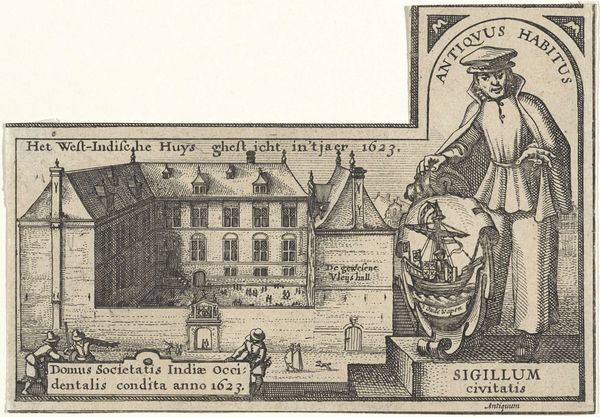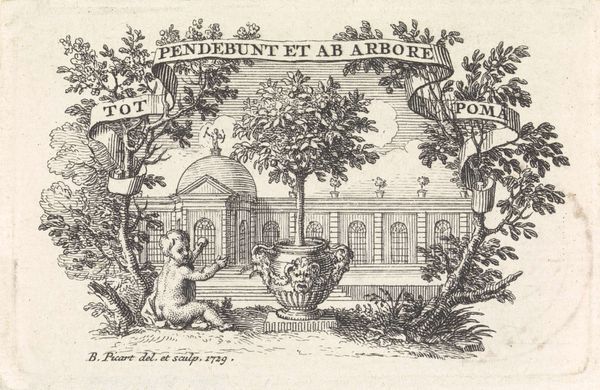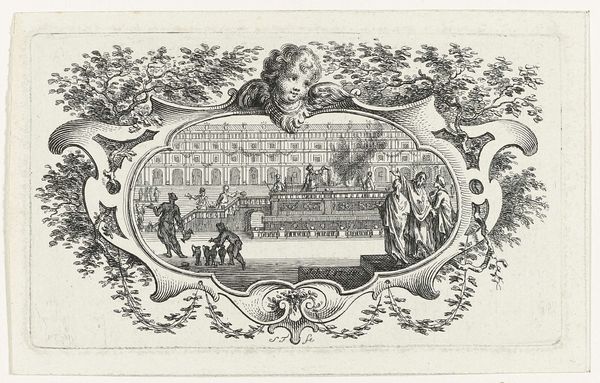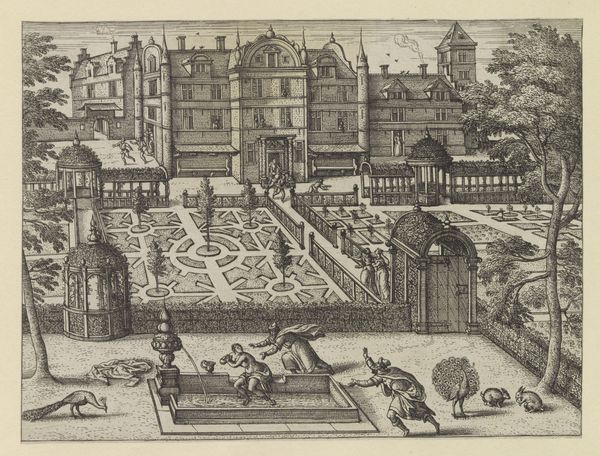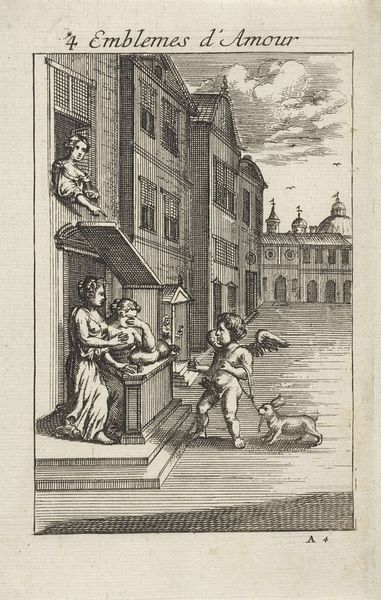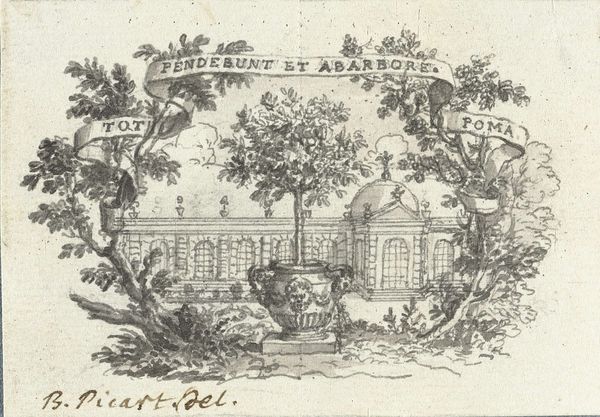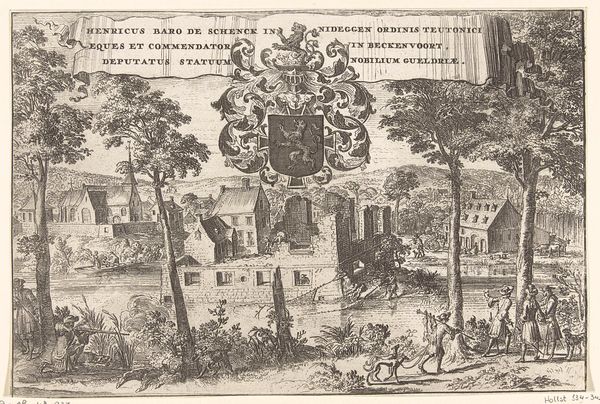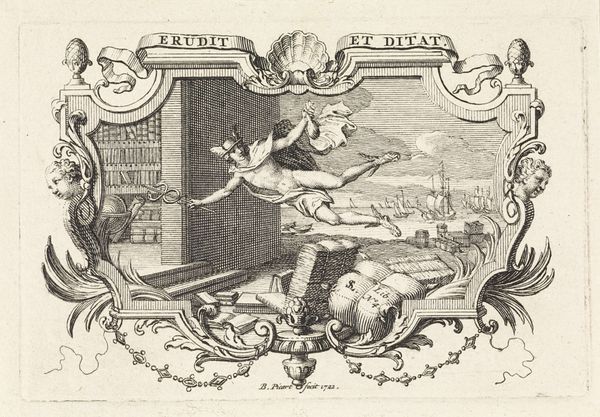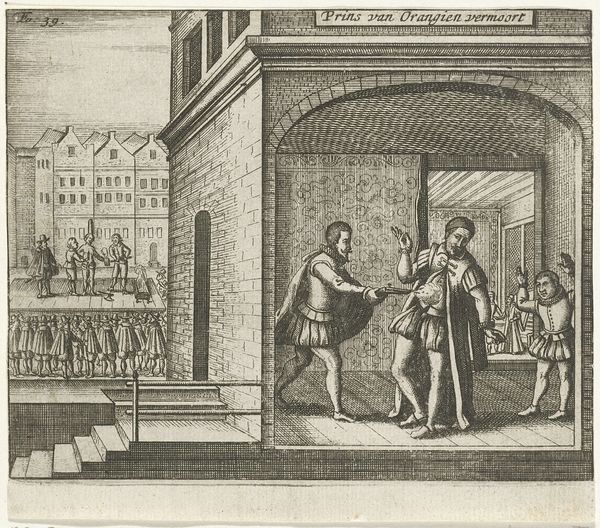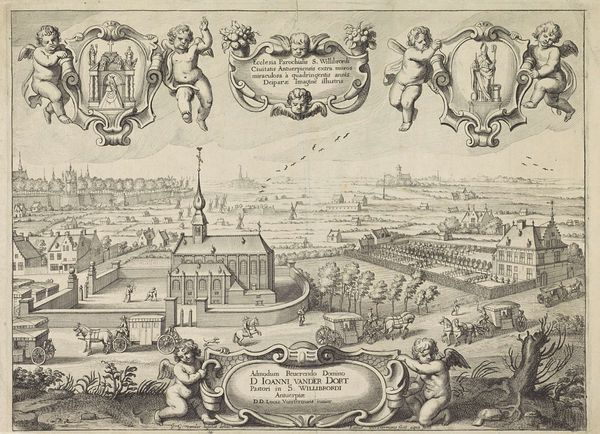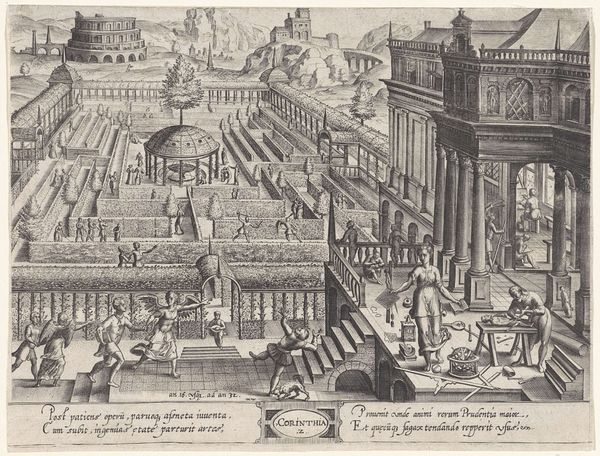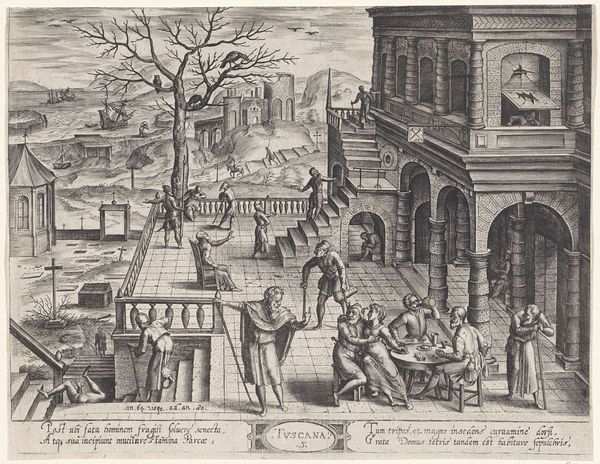
drawing, print, ink, engraving, architecture
#
portrait
#
drawing
#
pen drawing
#
dutch-golden-age
# print
#
ink
#
cityscape
#
engraving
#
architecture
Dimensions: height 97 mm, width 139 mm
Copyright: Rijks Museum: Open Domain
Claes Jansz. Visscher made this print of the Oost-Indisch Huis in Amsterdam sometime around the early 17th century, using the technique of engraving. The image is made up of a series of tiny parallel lines cut into a copper plate with a tool called a burin. These lines hold ink, which is then transferred to paper under high pressure. The result is a very crisp, detailed image. But consider what it pictures: the headquarters of the Dutch East India Company, which was essentially a corporation with a monopoly on trade with Asia. The wealth that flowed into the building depicted here was extracted through the labor of countless people, many of whom were enslaved, and all of whom were subject to the Company’s ruthless pursuit of profit. The fine, delicate lines of this print belie the violent story of its making. So, as we contemplate this image, let's remember that even the most seemingly innocuous objects can have a complex and even disturbing history. Recognizing this helps us move beyond a purely aesthetic appreciation, toward a deeper understanding of the world around us.
Comments
No comments
Be the first to comment and join the conversation on the ultimate creative platform.
